Marc Weidenbaum's Blog, page 316
January 1, 2017
What Sound Looks Like

The doorbell to the San Francisco campus of the California College of the Arts, where I gave my doorbell talk toward the end of last year, by which I mean 2016. Both times I’ve given the talk so far, I’ve started with the doorbell of the place where the talk is taking place. I like the idea that each time the talk will include the doorbells of all the places where I’ve given the talk previously.
An ongoing series cross-posted from instagram.com/dsqt.
10 Great 2016 iOS + Android Music/Sound Apps
The list of the main iOS music-making apps I used heavily and followed closely in their development this past year is somewhat boring, in that it largely consists of backend software. A whole suite of third-party tools has come to the fore in recent years in order to provide an ad hoc infrastructure for sharing sounds and computer instructions between apps, and between the iPad and other equipment.
Of these following four only Aum was new in 2016, while the others saw various updates and upgrades. I’ve put Aum first because it’s new, and the remaining three are in alphabetical order.

(1) Aum: As with all the apps in this sub-category, Aum seems like the sort of thing Apple should simply purchase and make part of the iOS backend. The company responsible for it describes it as “a flexible audio mixer, recorder, and connection hub,” but that really doesn’t do justice to how it will immediately become the home base for all your music making on an iPad once you start using it
(kymatica.com,
itunes.apple.com). Pictured above.
(2) Audiobus: There may not be another piece of software that is more requested for developers of music apps to include as part of their own releases. Audiobus is the de facto sound router for iOS, allowing for an enormous (and growing) library of apps to send sound back and forth
(audiob.us, itunes.apple.com).
(3) AudioShare: By the makers of Aum, this is a simple, elegant, and highly effective means to store and share audio files (and MIDI files) between apps. It’s been around since 2012, and its last major upgrade was in late 2015, though in early 2016 slide over and split screen support were added, which is especially helpful with infrastructure apps (kymatica.com,
itunes.apple.com).
(4) SilQ: Excellent, narrow-focus (32-band) equalizer that works via Audiobus (see above). I’m especially hopeful for MIDI implementation (tonapp.no,
itunes.apple.com).
And these six (well, #10 is sort of a list-making cheat) are performance-oriented iOS apps, the first five listed in alphabetical order, the last a grab bag:
(5) Blocs Wave: Novation already had a success on its hands with its Launchpad app when it launched this fluid, efficient, and pleasurable approach to sample-based sound production
(blocs.cc, itunes.apple.com).

(6) FieldScaper: This experimental sound manipulation tool by Igor Vasiliev is far from anything I’ve come close to mastering, but I find myself going back to it again and again to morph sounds and gain competency with its intricate toolset. The app debuted in late 2015, and this year it got even better with the addition of recording and editing features (motion-soundscape.blogspot.com, itunes.apple.com). Pictured above.
(7) H–r: This app is a creative resuscitation and refashioning of one of my favorite apps of all time, the RJDJ app from Reality Jockey. Alone among the apps I’m highlighting this year, H–r is where I always thought apps were headed, which is to say it provides a platform for the casual reimagining of sounds and environments. In fact, most music and sound apps these days have music producers, professional or not, in mind, rather than everyday consumers, but H–r (it’s had some issues with its name since launch) provides hope that audio-games and audio-toys still have a future.
(hearapp.io, itunes.apple.com).
(8) Korg Gadget: Korg has virtually reimagined itself as a software company, so rapid fire is its release schedule of iOS apps. This is a massive one, loaded with a variety of, per the name, audio gadgets, and it appears Korg has no plans to slow down its expansion.
(korg.com, itunes.apple.com).
(9) LoopyHD: This is arguably the most user-friendly audio looper available. It appealed to me initially because it allowed for easy desynchronization of loops. Many loopers, software and hardware alike, seem to assume the user wants a steady beat, but while Loopy is great for building songs in realtime, it also allows for layering of asynchronous sounds. I use it just as often with outboard sound sources, like Buddha Machines and the squelchy feedback of a no-input mixer, as I do with intra-app audio
(loopyapp.com,
itunes.apple.com).
(10) Various: When something like Korg Gadget costs upwards of $40, and is supported by a major music-technology company that’s been around for over half a century, it can be unfair to put it up against the wide range of inexpensive little apps out there, so I wanted to reserve space to note things like the free MIDI Wrench, which monitors MIDI communication and can be useful during troubleshooting (itunes.apple.com); the $0.99 Lofionic Duplicat, which simulates tape delay (itunes.apple.com); the whole suite of Timothy Barraclough’s $0.99 mini-apps (especially Dahlia Delay, Saffron Saturator, and Buttercup Bitcrush — more at timothy-j.com); and the free Hexaglyphics noise generator (itunes.apple.com).
Listing 10 (or so) iOS apps here is just the tip of the iOSberg. The high priority assigned to Aum and Audiobus is that I use them to connect so many other apps, including delays and noise sources, effects and sequencers, too many to list here. For solid retrospective insights on iOS music-making, I recommend the year-end articles on two great dedicated music-app sites: musicappblog.com, from John Walden, and palmsounds.net, from Ashley Elsdon.
And 10 Notable Android Music/Sound Apps:
In addition to my iPad Mini 2 (which I expect to upgrade in the coming year, as the old CPU is getting laggy, and I’d like something larger, especially for the modular-synth apps I’ve been fiddling with — and because I need more memory; Korg Gadget alone is over 600MB in size), I have an Android phone, currently the Nexus 5X. While Android is quite behind iOS in music-making software, there is a growing library of useful tools. This year I’ve made a lot of use of these 10 in particular, none of them necessarily new (though Caustic 3 got some great upgrades this year), mostly on the bus and while waiting for movies to begin, and as short-notice inputs for my modular synthesizer and looper. These are listed in alphabetical order.
(1) Caustic 3: A powerful and ubiquitous cross-platform music construction kit, packed with synthesizers, drum machines, a sequencer, and effects
(play.google.com
singlecellsoftware.com).
(2) Circle Synth: A simple sound generator from Two Big Ears, which earlier this year joined Facebook’s VR and AR development group. This appears to be unique to Android (play.google.com).
(3) Common FM: A simple synthesizer employing frequency modulation, and it comes packed with presets. This appears to be unique to Android
(play.google.com).
(4) DRC: A polyphonic synthesizer with a great user interface. Admirably, it’s also available for Windows, iOS, and Mac OSX. I use more powerful tools on my iPad, but on a phone-size screen it’s perfect (play.google.com
imaginando.pt).

(5) Function Generator: From the prolific keuwl.com app foundry, this is a nifty stereo waveform generator. This is unique to Android
(play.google.com
keuwl.com). Pictured above.
(6) MikroWave: A colorful little groovebox. This appears to be unique to Android (play.google.com, igorski.nl). (They also make Kosm, a visual sequencer, which I’ve yet to spend much time with.)

(7) Noise Maschine: An excellent noise generator. This appears to be unique to Android (play.google.com). Pictured above.
(8) Saucillator: A loop-oriented tactile synth by Matt Feury. This appears to be unique to Android (play.google.com).
(9) S.A.M.M.I.: A great little sound-experimentation app with a sequencer, drone machine, and theremin. Also available on iOS (play.google.com, futronica.com).
(10) SphereTones: A touch instrument with excellent random/counterpoint opportunities. Also available on iOS (play.google.com, binaura.net).
Buchla Music Easel Video for the New Year
This extended, 15-minute piece of synthesizer space music is the latest video I’ve added to my ongoing YouTube playlist of fine “Ambient Performances.” The Japan-based musician who goes by Ozashiki Techno is using the Buchla Music Easel in a live setting. The delicate balance of power between player and played is in evidence. A synthesizer session on something like the Buchla unfolds as much by instruction and cycles as it does by touch, and thus Ozashiki’s occasional intrusion into its space to adjust a fader or flip a switch or attend to a key occurs with the listener’s understanding that if no such motion was made, the Easel would likely persist in making music nonetheless. Ozashiki is there as much to guide as to play, to nudge and shift. The piece proceeds from filmic drones to beading percussives to wispy intonations. It’s the 19th in a series of live Buchla Easel recordings that began back in mid-September 2014. For Ozashiki, the video was a way to end the year; for viewers and listeners, it will be a way to start a new one.
Track originally posted at Ozashiki’s
youtube.com channel. More from Ozashiki, who is based in Tokyo, at twitter.com/ozashikitechno.
December 31, 2016
End the Year with Aphex Twin
In the United Kingdom it’s nearing midnight, so as I type this in San Francisco mid-afternoon it feels fairly safe to say that the track “tnodvood104” is the last bit of music that Aphex Twin released to the public in a characteristically — well, newly characteristically, after years of his quasi-silence — eventful 2016. It’s a refreshingly straight-ahead, 4/4 piece. There is no chaotic, entropy-loving IDM to its beats, and though there’s an ambient miasma in the background, the track as a whole is in no particular way ambient techno. Even in his ambient work, Aphex Twin rarely has suggested a strong influence by Brian Eno, but here, around the midway point, when layers of slightly nasal, casually atonal singing appears, it sounds very much like a bit of Eno’s slow-motion pop music. Otherwise it’s entirely instrumental, and a fine, understated way to ring in the new year.
Track originally posted at soundcloud.com/user18081971, the account where Richard D. James initially unspooled heaps of archival audio when he returned to active public service in 2014.
What Sound Looks Like

This is the doorbell at the Luggage Store Gallery in downtown San Francisco. Every Thursday night there are multiple sets of music, generally experimental, often electronic, usually local. That’s the Luggage Store Gallery Music Series in a nutshell. If you attend concerts there even just every few months, you start to recognize people, and easily feel at home. Parenthood and a heap of projects keep me from going to as many concerts as I once did, but I try to make time for the Luggage Store when I can. Sometimes I just go because it’s a Thursday night and I’m free: I don’t know what to expect, and I’m never disappointed.
This past Thursday I attended the final concert of the year at the Luggage Store, featuring Toaster (aka Todd Elliott), whom I know through the Disquiet Junto, and the trio of Sheila Bosco (electronics), Matt Davignon (electronics — he helps organize and run the series), and Suki O’Kane (percussion). This doorbell shown here is one I’ve never had reason to ring (except perhaps back in 2012, when I organized a Junto concert there), but always marveled at. It hints at the glorious Luggage Store staircase, a glimpse of which is seen to the side. The entry is festooned with graffiti and stickers in a manner that serves as a litmus test for attendees. It is either welcoming or off-putting, glorious or garish, vibrant or decrepit. I’m firmly in the welcoming/glorious/vibrant camp, myself.
Toaster played a beat-driven set on synthesizer, using Monome patches of his own devising. In between sections of his performance, as he swapped out the software, he piped in recordings off a tape cassette player, which was processed through a bitcrusher, rendering sonic pixel noise. It was an ingenious means to give the impression of a continuous performance, and yet give him, the performer, room to breathe. The trio played a downtempo series of flowingly rhythmic sequences, with Bosco and Davignon both using sampler loopers, and O’Kane on trap set. At one point O’Kane played a snare with her breath. At another she swept the air with a brush, and the place was quiet enough, even with Bosco and Davignon playing, for it to make its own sonic impression.
An ongoing series cross-posted from instagram.com/dsqt.
December 29, 2016
Disquiet Junto Project 0261: Audio Journal 2016

Each Thursday in the Disquiet Junto group, a new compositional challenge is set before the group’s members, who then have just over four days to upload a track in response to the assignment. Membership in the Junto is open: just join and participate. A SoundCloud account is helpful but not required. There’s no pressure to do every project. It’s weekly so that you know it’s there, every Thursday through Monday, when you have the time.
This project was posted in the morning, California time, on Thursday, December 29, 2016, with a deadline of 11:59pm wherever you are on Monday, January 2, 2017.
These are the instructions that went out to the group’s email list (at tinyletter.com/disquiet-junto):
Disquiet Junto Project 0261: Audio Journal 2016
The Assignment: Create a sonic diary of the past year with a dozen five-second segments.
This week’s project is a sound journal, a selective audio history of your past year.
Step 1: You will select a different audio element to represent each of the past 12 months of 2016. These audio elements will most likely be of music that you have yourself composed and recorded, but they might also consist of phone messages, field recordings, or other source material. These items should be somehow personal in nature, suitable to the autobiographical intention of the project; they should be of your own making, and not drawn from third-party sources.
Step 2: You will then select one five-second segment from each of these dozen audio elements.
Step 3: Then you will stitch these dozen five-second segments together in chronological order to form one single one-minute track. There should be no overlap or gap between segments; they should simply proceed from one to the next.
Step 4: In the notes field accompanying the track, identify each of the audio segments.
(Level Up: Alternately, you can use more than 12 audio segments — do two a month, or one a week, or one a day. Whatever you choose, just keep them evenly distributed across the year. You might make the segments shorter, to keep the full track length to 60 seconds.)
Five More Important Steps When Your Track Is Done:
Step 1: Per the instructions below, be sure to include the project tag “disquiet0261″ (no spaces) in the name of your track. If you’re posting on SoundCloud in particular, this is essential to my locating the tracks and creating a playlist of them.
Step 2: Upload your track. It is helpful but not essential that you use SoundCloud to host your track.
Step 3: In the following discussion thread at llllllll.co please consider posting your track.
http://llllllll.co/t/make-a-2016-soun...
Step 4: Annotate your track with a brief explanation of your approach and process.
Step 5: Then listen to and comment on tracks uploaded by your fellow Disquiet Junto participants.
Deadline: This project was posted in the morning, California time, on Thursday, December 29, 2016, with a deadline of 11:59pm wherever you are on Monday, January 2, 2017.
Length: The length is up to you, but three to four minutes sounds about right.
Title/Tag: When posting your track, please include “disquiet0261” in the title of the track, and where applicable (on SoundCloud, for example) as a tag.
Upload: When participating in this project, post one finished track with the project tag, and be sure to include a description of your process in planning, composing, and recording it. This description is an essential element of the communicative process inherent in the Disquiet Junto. Photos, video, and lists of equipment are always appreciated.
Download: It is preferable that your track is set as downloadable, and that it allows for attributed remixing (i.e., a Creative Commons license permitting non-commercial sharing with attribution).
Linking: When posting the track online, please be sure to include this information:
More on this 261st weekly Disquiet Junto project — “Audio Journal 2016: Create a sonic diary of the past year with a dozen five-second segments — at:
More on the Disquiet Junto at:
Subscribe to project announcements here:
http://tinyletter.com/disquiet-junto/
Project discussion takes place on llllllll.co:
http://llllllll.co/t/make-a-2016-soun...
There’s also on a Junto Slack. Send your email address to twitter.com/disquiet for Slack inclusion.
Photo associated with this project is by Bev Sykes, used thanks to a Creative Commons license:
December 27, 2016
10 Great 2016 Film and TV Scores
With the rise of underscoring, key big-screen composers such as Cliff Martinez, Clint Mansell, and Lisa Gerrard, among others, have managed to save the Hollywood score by diminishing its presence — and, in turn, they have raised its profile. With underscoring, an attention to room tone, background noise, and overall sound design plays as much a role as once did the grand-entrance character themes of times past. Nowadays underscoring has extended its influence to television, though the rapid pace of serial productions yields different outcomes, such as looped and repeated cues. (Sadly, TV scores are still far less likely than movie scores to be released for off-screen listening.) While scores ultimately serve the narratives for which they’re commissioned, they also serve a larger aesthetic purpose: a deeper, still emerging collective sense of where non-diegetic and diegetic sounds converge, how sound frames and participates in visual storytelling. And these days there is no better place than film (and on occasion TV) scores to hear music that revels at the intersection of ambient, techno, minimalism, and neo-classical, not to mention (where available) three-dimensional spatialization.
(1) Nick Cave and Warren Ellis — Hell or High Water (Milan)Who better than two Australians to provide mirror-refracted atmosphere to this modern Texas western? Their chamber-folk approach has the violin veering between classical composure and porch-fiddle intimacy.
(2) Shane Carruth — The Girlfriend Experience (no commercial release yet)Shane Carruth (writer, director, producer, composer, and co-star of Primer and Upstream Color) takes time out from his own filmmaking (the forthcoming The Modern Ocean) to lend an elevator-drone, glass-tower sheen to this TV-serial spinoff of the Steven Soderbergh film. It is as chilly and elegant, as anxious and zoned, out as are its cast of characters.
(3) Anne Dudley — Elle (Sony Classical)The former Art of Noise member renders concise cues that balance a minimalist’s attention to patterning with a classic silver-screen sense of drama, at times evidencing echoes John Barry and Bernard Herrmann.
(4) Max Richter — Miss Sloane (EuropaCorp)If only for the highly detailed ambient techno, all pitter-patter sound design, this would be a significant accomplishment, but Max Richter has such a range of skills at his disposal, he goes on to fold in orchestrations both intimate and broad.
(5) A Winged Victory for the Sullen — Iris (Erased Tapes)
A Winged Victory for the Sullen is Adam Bryanbaum Wiltzie and Dustin O’Halloran, and they infuse this erotic thriller with heart pulses and train rumbles, deeply emotional string sections, choruses that seem to fill football stadiums, and a lush, dreamy resonance.
(6) Jóhann Jóhannsson — Arrival (Deutsche Grammophon)When Denis Villeneuve was announced as the director of the forthcoming Blade Runner sequel, Blade Runner 2049, a certain subset of music fans sighed with relief. This was because of the seeming inevitability that Villeneuve’s frequent creative partner, composer Jóhann Jóhannsson (their work together include 2013’s Prisoners and 2015’s Sicario), would join him on Ridley Scott’s home turf, and thus make good on the classic Vangelis score of the original film. Arrival provided the duo with a science-fiction test run, and it’s a sprawling accomplishment, both earthy and otherworldly. (Contributing to the score as well: Theatre of Voices, conducted by Paul Hillier; synthesizer player Robert Aiki Aubrey Lowe; cellist Hildur Guonadottir; and a sample of vocalist Joan La Barbara.)
(7) Adrian Younge and Ali Shaheed Muhammed — Luke Cage (Hollywood)It’s a nice touch that each episode of the first season of this Harlem-set superhero drama takes a Gangs Starr song for its title. And that the club central to much of the story features live performances by the likes of Raphael Saadiq, Faith Evans, and Charles Bradley, among others. But what really gives the show its cultural swagger is the instrumental hip-hop score by Adrian Younge and Ali Shaheed Muhammed (the latter of A Tribe Called Quest), thick with terse beats and string samples.
(8) Abel Korzeniowski — Nocturnal Animals (Silva Screen)You can depend on director Tom Ford to employ only the finest fabrics, and Abel Korzeniowski makes good on such expectations with an orchestral score that yields hyper-minimalist pleasures, like the string marathon that is “Crossroads,” and old-school romanticism, like the luxuriously syrupy “City Lights.” Not all film composers do their own orchestrations, and when they do you can often tell by the attention to detail, as is the case here.
(9) Scott Walker — The Childhood of a Leader (4AD)It’s hard to make a case that Scott Walker’s feverish score for The Childhood of a Leader is anything close to underscoring, since the music is so in your face (well, in your ear), the orchestra being such a pounding, soaring figure throughout. Even when it’s quiet, such as briefly in the opening to “Up the Stairs,” it veers around the stereo spectrum in a fly-like manner that announces its unpredictable presence. But what it is is thoroughly composed, as if Walker felt that he’d never again have a full orchestra at his command, so he best make the most of the opportunity.
(10) Trent Reznor + Atticus Ross, Mogwai, Gustavo Santaolala — Before the Flood (Lakeshore)Neither the Social Network team of Trent Reznor and Atticus Ross nor the seasoned veteran Gustavo Santaolala scored a major work of film fiction in 2016, but they did team up with Mogwai for this documentary about the impact of climate change, delivering characteristically meticulous instrumental gems.
And 10 More Notable 2016 Film and TV Scores
In alphabetical order by artist: The clandestine auras of (11) Keefus Ciancia + David Holmes’ London Spy (no commercial release yet) • The artful claustrophobia of (12) Keefus Ciancia + David Holmes’ The Fall (no commercial release yet) • The impeccable eeriness of (13) Mark Korven’s The Witch (Milan) • The cold grace of (14) Mica Levi’s Jackie (Milan) • The hinting at familiar themes of (15) Michael Giacchino’s Rogue One: A Star Wars Story (Walt Disney) • The high-stakes trepidation of (16) Andy Gray’s Hunters (no commercial release yet) • The muted orchestral gravitas of (17) Rupert Gregson-Williams’ Hacksaw Ridge (Varèse Sarabande) • The metric anticipation of (18) Dominic Lewis’ Money Monster (Sony Classical) • The louche tension of (19) Clint Mansell’s High Rise (Silva Screen) • The high-style electronica of (20) Cliff Martinez’s The Neon Demon (Milan).
December 26, 2016
10 Great 2016 Ambient/Electronic Albums
I haven’t done one of these lists in several years. But I’ve come to realize that while the whole idea of top 10 lists is absurd — especially in a realm, like electronic music, that is such an embarrassment of riches these days — it can be a healthy exercise to take stock of the year before moving on to the next one. I think the recent 20th anniversary of Disquiet.com is especially on my mind, how an archive can be of use as time passes. Here in alphabetical order by artist are 10 especially great albums from 2016, and an additional 10 as well. For this list “ambient/electronic” is a broad field, from drones to broken beats to neo-classical, all works that emphasize texture as a form of composition, and that evidence a fully intentional approach to their instrumentation.
 (1) Autechre — elseq 1-5 (Warp)The IDM godfathers return with a massive, stately, sprawling collection, five LPs’ worth of broken beats, industrialized entropy, and conspiratorial static. Each piece has a rhythmic singularity, an organizing principle of beat, that then unfolds through alternately subtle and chaotic states of generative complexity.
(1) Autechre — elseq 1-5 (Warp)The IDM godfathers return with a massive, stately, sprawling collection, five LPs’ worth of broken beats, industrialized entropy, and conspiratorial static. Each piece has a rhythmic singularity, an organizing principle of beat, that then unfolds through alternately subtle and chaotic states of generative complexity.
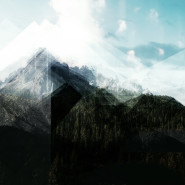 (2) Madeleine Cocolas — Cascadia (Futuresequence)Piano-based compositions merge in myriad ways with electronics, found sounds, and voice. And yet, for all the variety, all the depth of sonic field, under Madeleine Cocolas’ meticulous direction they never break the jewel-box self-confinement of modern classical minimalism.
(2) Madeleine Cocolas — Cascadia (Futuresequence)Piano-based compositions merge in myriad ways with electronics, found sounds, and voice. And yet, for all the variety, all the depth of sonic field, under Madeleine Cocolas’ meticulous direction they never break the jewel-box self-confinement of modern classical minimalism.
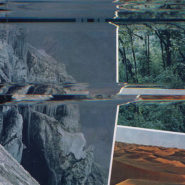 (3) Sarah Davachi — Dominions (Jaz)A second solo full-length from Sarah Davachi goes even more introspective than did its predecessor. The five tracks here, all made from synthesizer and violin, offer nuanced variations in sonic fabric, shifting minor bits of thread count, color, and patterning as they proceed.
(3) Sarah Davachi — Dominions (Jaz)A second solo full-length from Sarah Davachi goes even more introspective than did its predecessor. The five tracks here, all made from synthesizer and violin, offer nuanced variations in sonic fabric, shifting minor bits of thread count, color, and patterning as they proceed.
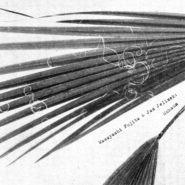 (4) Masayoshi Fujita + Jan Jelinek — Schaum (Faitiche)The latest collaboration between the Japanese prepared-vibraphone player Masayoshi Fujita and German electronics maven Jan Jelinek takes its title from the German word for foam. Gentle textures belie the rich source material and generous interplay.
(4) Masayoshi Fujita + Jan Jelinek — Schaum (Faitiche)The latest collaboration between the Japanese prepared-vibraphone player Masayoshi Fujita and German electronics maven Jan Jelinek takes its title from the German word for foam. Gentle textures belie the rich source material and generous interplay.
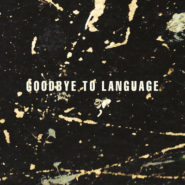 (5) Daniel Lanois — Goodbye to Language (Anti-)In many ways Daniel Lanois finally this year released the album his most ardent fans longed for, in which production techniques he’s provided to Bob Dylan, U2, and so many others are finally given their own space to stretch out. He brings his textural focus to his and Rocco Deluca’s guitars for a moody, glitchy achievement.
(5) Daniel Lanois — Goodbye to Language (Anti-)In many ways Daniel Lanois finally this year released the album his most ardent fans longed for, in which production techniques he’s provided to Bob Dylan, U2, and so many others are finally given their own space to stretch out. He brings his textural focus to his and Rocco Deluca’s guitars for a moody, glitchy achievement.
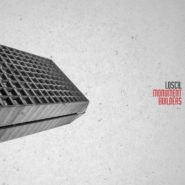 (6) Loscil — Monument Builders (Kranky)The prolific Scott Morgan, who performs and records as Loscil, unfolds one forbidding techno-schooled, minimalism-informed soundscape after another, sometimes shot through with an urgent momentum, often left to their own artfully bleak devices. Sharing credit are Nick Anderson on occasional French horn (bringing to mind Ingram Marshall’s stately “Fog Tropes”), synthesizer player Joshua Stevenson, and a vocal sample of Ashley Pitre.
(6) Loscil — Monument Builders (Kranky)The prolific Scott Morgan, who performs and records as Loscil, unfolds one forbidding techno-schooled, minimalism-informed soundscape after another, sometimes shot through with an urgent momentum, often left to their own artfully bleak devices. Sharing credit are Nick Anderson on occasional French horn (bringing to mind Ingram Marshall’s stately “Fog Tropes”), synthesizer player Joshua Stevenson, and a vocal sample of Ashley Pitre.
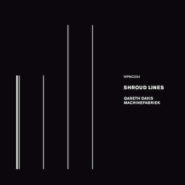 (7) Machinefabriek + Gareth Davis — Shroud Lines (White Paddy Mountain)An extended excursion into live improvisatory collaboration, with the gregarious and prolific Machinefabriek on drone- and noise-oriented synthesizers and Gareth Davis on bottom-rumbling bass clarinet.
(7) Machinefabriek + Gareth Davis — Shroud Lines (White Paddy Mountain)An extended excursion into live improvisatory collaboration, with the gregarious and prolific Machinefabriek on drone- and noise-oriented synthesizers and Gareth Davis on bottom-rumbling bass clarinet.
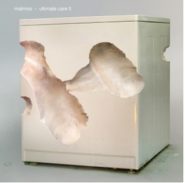 (8) Matmos — Ultimate Care II (Thrill Jockey)The duo Matmos (Drew Daniel and M.C. Schmidt) team up with a washing machine and a host of guest stars for an album of glistening, churning, pop-inflected noise, all charming beats and anxious atmospheres. The guests include Dan Deacon, Max Eilbacher (Horse Lords), Sam Haberman (Horse Lords), Jason Willett (Half Japanese), and Duncan Moore (Needle Gun).
(8) Matmos — Ultimate Care II (Thrill Jockey)The duo Matmos (Drew Daniel and M.C. Schmidt) team up with a washing machine and a host of guest stars for an album of glistening, churning, pop-inflected noise, all charming beats and anxious atmospheres. The guests include Dan Deacon, Max Eilbacher (Horse Lords), Sam Haberman (Horse Lords), Jason Willett (Half Japanese), and Duncan Moore (Needle Gun).
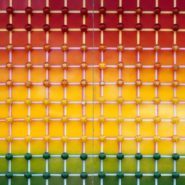 (9) Nonkeen — The Gamble (R&S)Nils Frahm steps out from his solo-piano realm to produce, with fellow Nonkeen members Frederic Gmeiner and Sepp Singwald, this strong collection of sedate fusion grooves. Think early Miles Davis electric filtered by way of a hybrid Erased Tapes / Stones Throw aesthetic, all downtempo funky ether. There’s one track on this, “The Saddest Continent on Earth,” that I listened to more than just about any other piece of music this year. (Andrea Belfi is credited with percussion on just over half the track.)
(9) Nonkeen — The Gamble (R&S)Nils Frahm steps out from his solo-piano realm to produce, with fellow Nonkeen members Frederic Gmeiner and Sepp Singwald, this strong collection of sedate fusion grooves. Think early Miles Davis electric filtered by way of a hybrid Erased Tapes / Stones Throw aesthetic, all downtempo funky ether. There’s one track on this, “The Saddest Continent on Earth,” that I listened to more than just about any other piece of music this year. (Andrea Belfi is credited with percussion on just over half the track.)
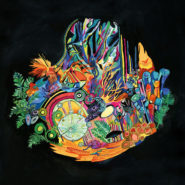 (10) Kaitlyn Aurelia Smith — Ears (Western Vinyl)The ace synthesizer player shares eight stereoscopic fields of sonic play, each a fully inhabited aural world of instants and melodies, riffs and figments. There’s a whirligig festiveness to each undertaking, chamber pop snapshots of an incredibly vibrant imagination at work.
(10) Kaitlyn Aurelia Smith — Ears (Western Vinyl)The ace synthesizer player shares eight stereoscopic fields of sonic play, each a fully inhabited aural world of instants and melodies, riffs and figments. There’s a whirligig festiveness to each undertaking, chamber pop snapshots of an incredibly vibrant imagination at work.
And 10 More Notable 2016 Ambient/Electronic Albums
In alphabetical order by artist: The abstract hip-hop of (11) Arckatron’s Subtle Busyness (Twin Springs) • The electronically mediated vocalese of (12) Julianna Barwick’s Will (Dead Oceans) • The austere, sedate drone confections of (13) Donnacha Costello’s Mono No Aware (self-released) • The field-recording-inflected microsound of (14) Federico Durand’s A Través Del Espejo (12k) • The dramatic vocal/feedback explorations of (15) Lesley Flanigan’s Hedera (Physical Editions) • The whirring synth+ (voice, violin, more) of (16) Marielle V Jakobsons’ Star Core (Thrill Jockey) • The outworld dub of (17) Toshinori Kondo + Barton Rage’s Realm 2 Parallax (Toshinori Kondo Recordings) • The electronica collages of (18) Funki Porcini’s Conservative Apocalypse (self-released) • The inchoate data pop of (19) Tristan Perich’s Noise Patterns (Physical Editions) • The remixed neo-classical of (20) Christina Vantzou’s 3.5 (self-released).
December 24, 2016
What Sound Looks Like

Picked up three LPs yesterday at a used-music shop, two scores and a compilation. One of the scores is John Williams’ Earthquake, which I’ve been interested in since collaborating with Geoff Manaugh on a fault-sonification project several years ago. The big takeaway from the LP, released in 1974, is that much of what could be mistaken for score in the film is, in fact, the sound design of the communications, infrastructure, and emergency services activity. The recording closes with almost three minutes of “actual sound effects,” per the bright pink sticker on the LP cover. I’ve never heard the Earthquake music on its own, separate from the film, before.
The second is Two Film Scores for Piano (1976), both by Harvey Schmidt, composer of the 1960 musical The Fantasticks. One is from A Texas Romance, 1909 (from 1964), written and directed by Fantasticks lyricist Tom Jones, and the other is from Bad Company (from 1972), a more straight-ahead drama directed by Robert Benton and starring Jeff Bridges. I don’t know of many movies that have only piano for the score. The main one I can think of is The Firm, with music by Dave Grusin, which I sometimes discuss in the class I teach on sound. There’s also David Shire’s The Conversation, another subject in class, though that one employs some sonic effects to extend the music’s psychological telegraphing. I’m interested in how the solo piano works in film, since film music historically has been a fairly grand affair; it took Hollywood a lot longer to lose the orchestra than it did the sense of film being merely a document of theater. And there’s the connection to silent film scores. Solo piano is also timely, due to HBO’s much-discussed Westworld.
The third album is a Windham Hill compilation from 1987, Soul of the Machine, one in a series of themed collections the new-age label was releasing at the time. It was preceded by a piano set and succeeded by a guitar album. Beyond its utility as a period document, I was most interested in a piece by Gary Chang, who composed one of my favorite film scores, A Shock to the System, directed by Jan Egleson, which combined electronics with the Turtle Island String Quartet.
An ongoing series cross-posted from instagram.com/dsqt.
December 22, 2016
Disquiet Junto Project 0260: Tone Fade

Each Thursday in the Disquiet Junto group, a new compositional challenge is set before the group’s members, who then have just over four days to upload a track in response to the assignment. Membership in the Junto is open: just join and participate. A SoundCloud account is helpful but not required. There’s no pressure to do every project. It’s weekly so that you know it’s there, every Thursday through Monday, when you have the time.
Tracks will be added to this playlist for the duration of the project:
This project was posted in the morning, California time, on Thursday, December 22, 2016, with a deadline of 11:59pm wherever you are on Monday, December 26, 2016.
These are the instructions that went out to the group’s email list (at tinyletter.com/disquiet-junto):
Disquiet Junto Project 0260: Tone Fade
An exercise in when a sound ends.
Step 1: More than many Junto projects, this is essentially an exercise, one that is as much about listening as it is about playing. It’s also a live performance.
Step 2: Choose an instrument that can have a fairly long fade.
Step 3: The plan is to record yourself playing the instrument selected in Step 2 for around three to four minutes straight, and certainly longer if you choose. Set up your equipment to allow for this.
Step 4: Choose a note or a chord to play on the instrument. You’ll only be playing that one note or chord for the duration of the piece.
Step 5: The plan is to play that note or chord, and to then wait until you’re certain you can no longer hear it, and to then at that instant strike the note or chord again. You’ll do this over and over — waiting until it is silent, but not letting the silence linger. Do this for as long as you like. Three or four minutes seems about right. Kudos in advance to the sonic yogis who aim for half an hour or longer.
Five More Important Steps When Your Track Is Done:
Step 1: Per the instructions below, be sure to include the project tag “disquiet0260″ (no spaces) in the name of your track. If you’re posting on SoundCloud in particular, this is essential to my locating the tracks and creating a playlist of them.
Step 2: Upload your track. It is helpful but not essential that you use SoundCloud to host your track.
Step 3: In the following discussion thread at llllllll.co please consider posting your track.
http://llllllll.co/t/disquiet-junto-p...
Step 4: Annotate your track with a brief explanation of your approach and process.
Step 5: Then listen to and comment on tracks uploaded by your fellow Disquiet Junto participants.
Deadline: This project was posted in the morning, California time, on Thursday, December 22, 2016, with a deadline of 11:59pm wherever you are on Monday, December 26, 2016.
Length: The length is up to you, but three to four minutes sounds about right.
Title/Tag: When posting your track, please include “disquiet0260” in the title of the track, and where applicable (on SoundCloud, for example) as a tag.
Upload: When participating in this project, post one finished track with the project tag, and be sure to include a description of your process in planning, composing, and recording it. This description is an essential element of the communicative process inherent in the Disquiet Junto. Photos, video, and lists of equipment are always appreciated.
Download: It is preferable that your track is set as downloadable, and that it allows for attributed remixing (i.e., a Creative Commons license permitting non-commercial sharing with attribution).
Linking: When posting the track online, please be sure to include this information:
More on this 260th weekly Disquiet Junto project — “Tone Fade: An exercise in when a sound ends — at:
(This project is for Sterling.)
More on the Disquiet Junto at:
Subscribe to project announcements here:
http://tinyletter.com/disquiet-junto/
Project discussion takes place on llllllll.co:
http://llllllll.co/t/disquiet-junto-p...
There’s also on a Junto Slack. Send your email address to twitter.com/disquiet for Slack inclusion.
Photo associated with this project is by Michel Banabila, used thanks to a Creative Commons license:



